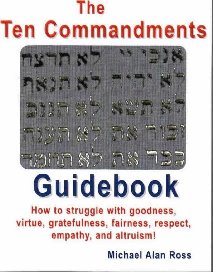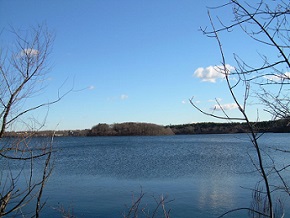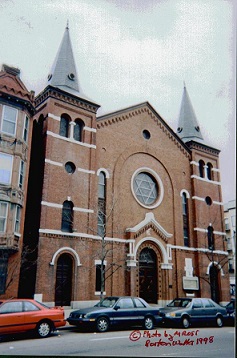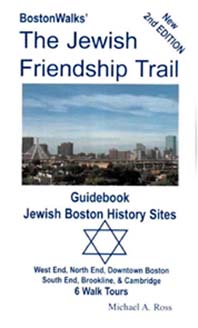CLICK HERE TO VIEW OUR MOST RECENT WEBSITE
JEWISH SITES & HISTORY IN PHOENIX AND SCOTTSDALE, ARIZONA
Discover Jewish History in Some of America's Greatest Cities!
Jewish Friendship Trail Guidebooks, as of 2020, only are available directly from the author/publisher. To purchase a Jewish Friendship Trail Guidebook, Email: BostonWalks
NOW AVAILABLE - (1) Phoenix Scottsdale Jewish Friendship Trail GuideBook
with 7 Tours of Sites of Phoenix Scottsdale Jewry!
Was $19.95 USD Now $8.00 USD + $3 Media Mail
Order your copy now directly from publisher.
(2) BostonWalks Jewish Friendship Trail GuideBook
with 6 Tours of Sites of Boston, Brookline, and Cambridge Jewry!
Was $19.95 USD Now $8.00 USD + $3 Media Mail
Order your copy now directly from publisher.
(3) BostonWalks The Ten Commandments GuideBook
with creative suggestions for approaching our Ten Commandments!
Was $19.95 USD Now $8.00 USD + $3 Media Mail
Order your reduced price copy now directly from publisher.
Email: BostonWalks



Brooklyn Chai Live



Discover a progressive Jewish interpretation of Maimonides' 13 principles here! |
Celebrating 361 Years
|


The Ten Commandments
Click here to peruse Michael Alan Ross' original lyrics
TRY TO SMILE AND LOVE YOUR NEIGHBOR

considering what Mr. Ross labels the 11th Commandment
Love your neighbor as
yourself.
Now available!
The Jewish Friendship Trail Guidebook
6
Self-Guided Walking/Bicycling Jewish Boston History Tours
Covers
Boston, Brookline, and Cambridge
Softcover 198 pages with maps &
b/w photos
Click here
Book Order Form
to order now!
Now available!
The Ten Commandments Guidebook
Ways to Self-Struggle with
Classic Morals
In Song, Poetry, and Prose
Covers 10 Commandments Plus One Other!
Softcover 153 pages with
practical suggestions pages!
Click here
Book
Order Form
to order now!
Boston Walks The Jewish Friendship Trail presents

Synagogues
of
Boston's North End
Copyright ©
Michael Alan Ross, 1997-2015.
All Rights Reserved.
Email: BostonWalks
|
Click here to peruse Michael Alan Ross' original lyrics TRY TO SMILE AND LOVE YOUR NEIGHBOR  considering what Mr. Ross labels the 11th Commandment Love your neighbor as yourself. |
Now available!The Jewish Friendship Trail Guidebook 6
Self-Guided Walking/Bicycling Jewish Boston History Tours Covers
Boston, Brookline, and Cambridge Softcover 198 pages with maps &
b/w photos Click here |
Now available!
The Ten Commandments Guidebook Ways to Self-Struggle with
Classic Morals In Song, Poetry, and Prose
Covers 10 Commandments Plus One Other! Softcover 153 pages with
practical suggestions pages! Click here |
Boston Walks The Jewish Friendship Trail presents

Synagogues
of
Boston's North End
Copyright ©
Michael Alan Ross, 1997-2015.
All Rights Reserved.
Email: BostonWalks

For the 6.3 thousand Eastern European Jews who settled in Boston's North End
between 1870 and 1920, forming a minyan for daily prayer was one of their priorities.
In the course of these fifty years, at least five minyans (prayer groups) evolved into
North End shuls (synagogues). Talmud Torahs and heders (Hebrew schools) also developed
nearby.
Three buildings which housed these shuls and Hebrew schools still exist today in the
North End.
 287 Hanover Street A building commonly known as Cockerel Hall, was home to both a synagogue and to a Talmud Torah.

4 Baldwin Placeand
3 Jerusalem Place once served as Hebrew Schools and today are nondescript North End alleyway sites. None of these three buildings have plaques.Beginning in 1875, Boruch Isaac Reinherz, intermittently functioned as hazzan (cantor) and shochet (koshering butcher) for Congregations Chevra Tehillim, Shomre Shabbos, and Beth Abraham. When the latter two congregations merged to become Shomre Beth Abraham in 1886, Moses Z. Margolies, an experienced rabbi and student of the Talmud, became the combined shul's spiritual leader. Rabbi Margolies, known by the acronym "RaMaZ," also later acted as rabbi for both Congregation Beth Israel (the Baldwin Place Synagogue) - the largest shul of Boston's North End - which for 31 years (1889-1920) was situated at the end of Baldwin Place, and for Congregation Shaarei Jerusalem which for more than 40 years (1903-1945) stood at the end of Jerusalem Place (formerly Carroll Place). Neither of these buildings are extant today. During the last decade of the 19th century and the first decade of the 20th century, the Baldwin Place Synagogue in particular was considered a central address for traditional Judaism in Boston. In addition, this shul's women's auxiliary created and maintained the nearby Cooper Street B'not Israel Sheltering Home for newly arrived immigrants. While Jewish backgrounds of 1st generation Eastern European male immigrants to Boston's North End typically were traditional; survival here meant balancing priorities among work, a wife and children (who, initially, were dependents at home), education and Americanization, organizations (clubs, unions, etc.), and shuls/Jewishness. Work for a sizable number of our 1st generation Eastern European Jewish male immigrants was in the garment industries. Quite a few of the men were tailors, dressmakers, and hat and cap makers. Other common livelihoods included carpentry and woodworking, shoemaking, clerking and accounting, and painting and glazing. There also were Jewish butchers and bakers, locksmiths and blacksmiths, tinners and metalworkers, watch and clock makers, tobacco workers (particularly, cigar rollers), barbers, furriers, bookbinders, photographers, upholsterers, and jewelers. Not to leave out peddlers and merchants, teachers, and musicians. In practice, then, due to the demands of earning a living; the men's principal Jewish expressions included making a minyan (prayer quorum), sharing Friday night shabbos dinner, celebrating simchas (weddings and bar mitzvahs) and yontifs (holy days), and feeding the pushkes (the charity boxes). In addition, some of the men participated in a North End Talmud study group (chevra shas) and a burial society (chevra kadisha). 1st generation Eastern European Jewish women immigrants and children constituted approximately half of the North End's Jewish population. A majority of these women were housewives and mothers. While most were not formally educated; many of the women either had or developed skills such as sewing, cooking and baking, cleaning, shopping, child care, and Yiddishkite (performing the rituals of a traditional Jewish wife...from making Shabbos to going to a mikvah). Some of these 1st generation Jewish women immigrants earned money by sewing piece goods at home, by taking in boarders, and by running (by themselves or with their husbands) small retail shops. It was the daughters of the 1st generation who, along with their fathers, more often became full-time workers in the various garment industries. Jewish children in the North End were quickly enrolled in public schools, Hebrew schools, and clubs. Jewish girls could participate in Lina Hecht's and Golde Bamber's Hebrew Industrial School. Jewish boys sometimes earned money as newsboys. When the North End's Baldwin Place Synagogue, Congregation Beth Israel, disbanded in 1920; the shul's aron kodish (the holy ark) made of hand-carved mahogany was transferred to Temple Bnai Brith in Somerville, Massachusetts where the aron kodish still is in use today.
|

YOU CAN SELF-DISCOVER THESE AND MANY MORE JEWISH BOSTON HISTORY SITES BY PURCHASING OUR GUIDEBOOK
BOSTONWALKS THE JEWISH FRIENDSHIP TRAIL GUIDEBOOK!
CLICK HERE TO PRINT OUT AN ORDER FORM!

Links to Boston and New England
-
Walk or bike ride with BostonWalks and explore the neighborhoods
adjacent to the Charles River
- For 10
great places
to walk with water views in Boston,
click on this smiling
face

click on this smiling face



From
the Charles River, a red, white, & blue political agenda flows!
Now available!The Jewish Friendship Trail Guidebook 6
Self-Guided Walking/Bicycling Jewish Boston History Tours Covers
Boston, Brookline, and Cambridge Softcover 198 pages with maps &
b/w photos Click here |
Now available!
The Ten Commandments Guidebook Ways to Self-Struggle with
Classic Morals In Song, Poetry, and Prose
Covers 10 Commandments Plus One Other! Softcover 153 pages with
practical suggestions pages! Click here |

The Jewish Friendship
Trail in Boston's West and North Ends includes the
homes of
Brandeis
and Filene
Chazak Ve-ematz
|
















































![]() Filene
Filene![]() Best of Boston
Best of Boston![]() NYC UWS
NYC UWS![]() Brandeis
Brandeis ![]() Love Your Neighbor
Love Your Neighbor![]() Watertown, New Town, & Muddy River
Watertown, New Town, & Muddy River![]() Walk Near Water
Walk Near Water![]() Refute Hate
Refute Hate
![]() Walk West/North Ends
Walk West/North Ends
![]() We're One
We're One
![]() Pray Here
Pray Here![]() Meditation
Meditation![]() Clubs
Clubs![]() Brookline
Brookline![]() Sensual Walks
Sensual Walks![]() More Love
More Love![]() Reporting
Reporting![]() Jewish Books
Jewish Books![]() TEN
TEN![]() South End
South End
![]() What's a political mensch?
What's a political mensch?
![]() More "What's a political mensch?"
More "What's a political mensch?"
by Michael Alan Ross |
Boston Walks
|

Click here for 10 reasons for more bike trails!

 ...How many?
...How many?

